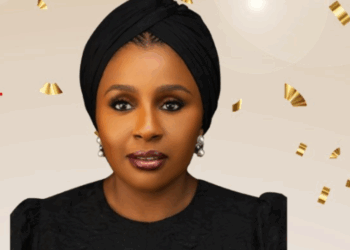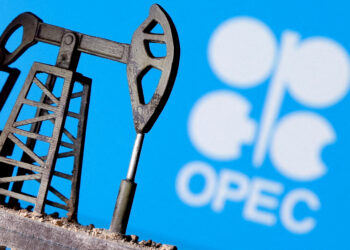The Coronavirus pandemic that started as an epidemic in the Chinese city of Wuhan, has rapidly evolved from a global health challenge to an economic crisis with destabilising effects on countries, businesses, and individuals.
The world’s leading oil-producing countries appear to be the hardest hit, having been forced to contend with the dual shock of the pandemic and the crash in oil prices. This is mainly the case for countries in Africa (home to 7 of OPEC’s 13 member countries) who have to contend with both struggling economies and weak health systems. For the likes of Russia, Iran, and the United States, the effect has mainly been the health hazard caused by the virus.
Focus on the world’s oil producers who have been hardest hit by COVID-19; where they stand now
- The United States: The US has so far recorded 1.38 million COVID-19 infections with 82,018 deaths, the highest for any country in the world. Lockdown in at least 40 states has helped to slow down the spread of the virus, with the rate of hospitalization on a steady decline for 3 weeks now.
The US, which is the world’s biggest oil producer with 13.1 million barrels of crude and lease condensate per day, had its daily production drop by 900,000 barrels in April. This is mostly due to independent curtailments by major shale producers.
(READ MORE: Crude oil prices surge higher, Brent crude nears $30 per barrel)
Although the energy industry provides more than 10 million jobs with almost 8% of the country’s GDP, the US is less dependent on oil compared to average OPEC countries. However, its shale industry remains vulnerable to severe credit crunch and bankruptcies.

- Russia: With 232,243 COVID-19 infections, Russia ranks 3rd highest in the world, though its death rate which is 2,116, is the lowest for countries with more than 100,000 infections. On Monday, the Russian President announced an end to the country’s 6 weeks lockdown. After weeks of stand-off, Russia finally agreed to OPEC+’s recommendation for production cuts with the country’s energy minister directing oil companies to reduce production by 20% each.
Russia, with 10.9 million barrels daily production and 2nd highest in the world, is feeling the hit from oil price collapse. Although the country’s main oil brand, Urals, has held up better than American WTI, the current price of about $30 is considerably lower than $40 per barrel level it needs to balance its budget as per IMF estimates.
- Saudi Arabia: With 42,925 infections and 264 deaths, Saudi Arabia, last month, partially lifted the curfew in all regions except in Mecca, where they maintained 24-hour curfew.
As OPEC’s largest producer and one of the original members, Saudi Arabia is the coalition’s de facto leader. It is also one of the producers who are feeling the biggest squeeze of the energy crisis, thanks to its high dependence on oil (50% of GDP) and fiscal breakeven of $76.1 per barrel. The kingdom had assumed an oil benchmark price of $60 per barrel in its 2020 budget.
(READ MORE: Oil Crisis: OPEC deal gets further boost from African Petroleum Producers’ Organization)
- Iraq: This country is one of the first to get into lockdown and also ease restrictions. It is also OPEC’s second-largest oil producer and home to some of the world’s largest known oil reserves. The country had been cranking up production to a record 4.88 million barrel per day last year at a time when OPEC was trying to lower production. Iraq needs an oil price of $60.4 per barrel to balance its books.

- Iran: With 110,767 infections, they are by far the highest for an OPEC country and the 10th highest in the world. Iran has started to ease restrictions in order to support the economy that had already been battered prior to the pandemic. Recall that Iran’s oil production was nearly halved after US President, Donald Trump pulled out of the landmark nuclear deal in 2018. However, the country is still an important global oil player with 2.02 million barrels per day production in March. The IMF estimates that Iran needs a massive $389 a barrel to balance its books, a situation that is not helped by reduced Chinese crude oil imports from the country.
READ MORE: What banks might do to avoid getting crushed by Oil & Gas Loans
- Nigeria: Africa’s most populous country and largest economy, has 4,641 infections with 151 deaths. Last week, Nigeria started gradual easing of the lockdowns in at least 2 major states and its Federal Capital Territory, and there has been an increase in new cases and deaths since the restrictions were lifted. Nigeria is Africa’s largest oil producer, pumping about 1.78 million barrels per day in March. Oil sales contribute about 90% of the country’s foreign exchange earnings, 60% of the revenue, and 8% of GDP.
With a high fiscal breakeven of $144 per barrel, the country is finding itself in a critical situation, with IOCs needing $35-$40 per barrel to break even. The country just got a $3.4 billion from IMF, with about $3.5 billion loan request still outstanding with AfDB and World Bank.
- Angola: Angola, with just 45 infections and only 2 deaths, is moving to tighten lockdown restrictions in order to contain increasing cases. The country is Africa’s 2nd largest crude oil producer with 1.4 million barrels per day in March. The country is also one of the better-placed producers in the continent, with IMF estimating that it needs an oil price of $55 per barrel for fiscal breakeven.
























